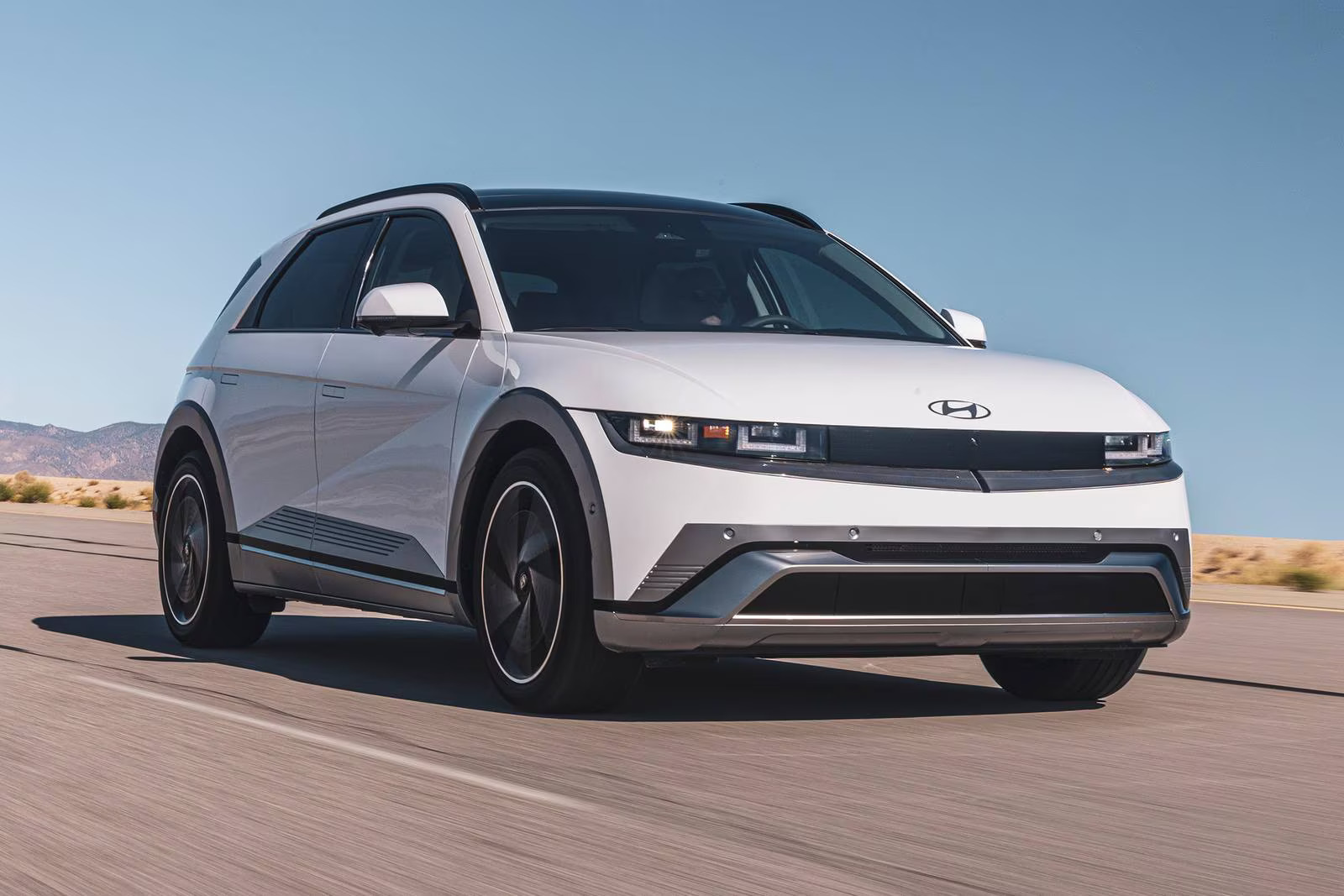For drivers living in northern latitudes or regions that experience harsh winters, understanding an EV’s cold-weather performance is paramount.
Unlike traditional internal combustion engine vehicles that generate heat as a natural byproduct of fuel combustion, EVs rely solely on battery power to operate both the drivetrain and cabin heating systems.
This fundamental difference presents unique challenges in freezing temperatures, where battery chemistry slows down and energy demands for heating skyrocket, often resulting in a notable reduction in driving range.
Battery performance is deeply influenced by temperature. Lithium-ion batteries, the dominant technology in most EVs, operate optimally within a moderate temperature range. When exposed to freezing conditions, the chemical reactions inside these batteries slow, reducing their ability to hold and deliver power efficiently.
This not only impacts acceleration and top speed but also diminishes the total available range, a crucial factor for drivers planning long trips or daily commutes in cold weather.
Additionally, cold temperatures can significantly slow down charging rates, making it more time-consuming to replenish battery capacity during winter months. As a result, the winter performance of an EV becomes a critical factor in its overall usability and acceptance.
However, not all EVs handle cold weather equally. Automakers have developed various strategies to mitigate the impact of low temperatures on battery life, heating efficiency, and overall vehicle performance.
These solutions include sophisticated thermal management systems that keep batteries at optimal temperatures, energy-efficient heat pumps that reduce the burden of cabin heating on the battery, and smart software features that precondition the vehicle while it’s still plugged in.
Some vehicles even leverage over-the-air software updates to continually improve cold-weather performance based on real-world data from users. The effectiveness of these systems often defines the difference between an EV that remains practical and reliable during winter and one that suffers from severe range loss and reduced usability.
Understanding which EVs excel in freezing climates versus those that struggle to maintain range can help prospective buyers make informed decisions tailored to their regional needs.
Models equipped with advanced battery thermal management and heat pump technology tend to retain more of their driving range during cold weather, offering drivers peace of mind and consistent performance.
On the other hand, vehicles without these features often experience steep drops in range, longer charging times, and higher energy consumption for heating, which can complicate winter driving.
In this article, we will explore five electric vehicles that stand out for their excellent cold-weather performance, demonstrating how innovation and thoughtful engineering have enabled them to thrive in freezing conditions.
ALSO READ: 5 SUVs/Vans with Long-Term Safety Records vs 5 with Declining Safety
5 EVs That Excel in Freezing Climates
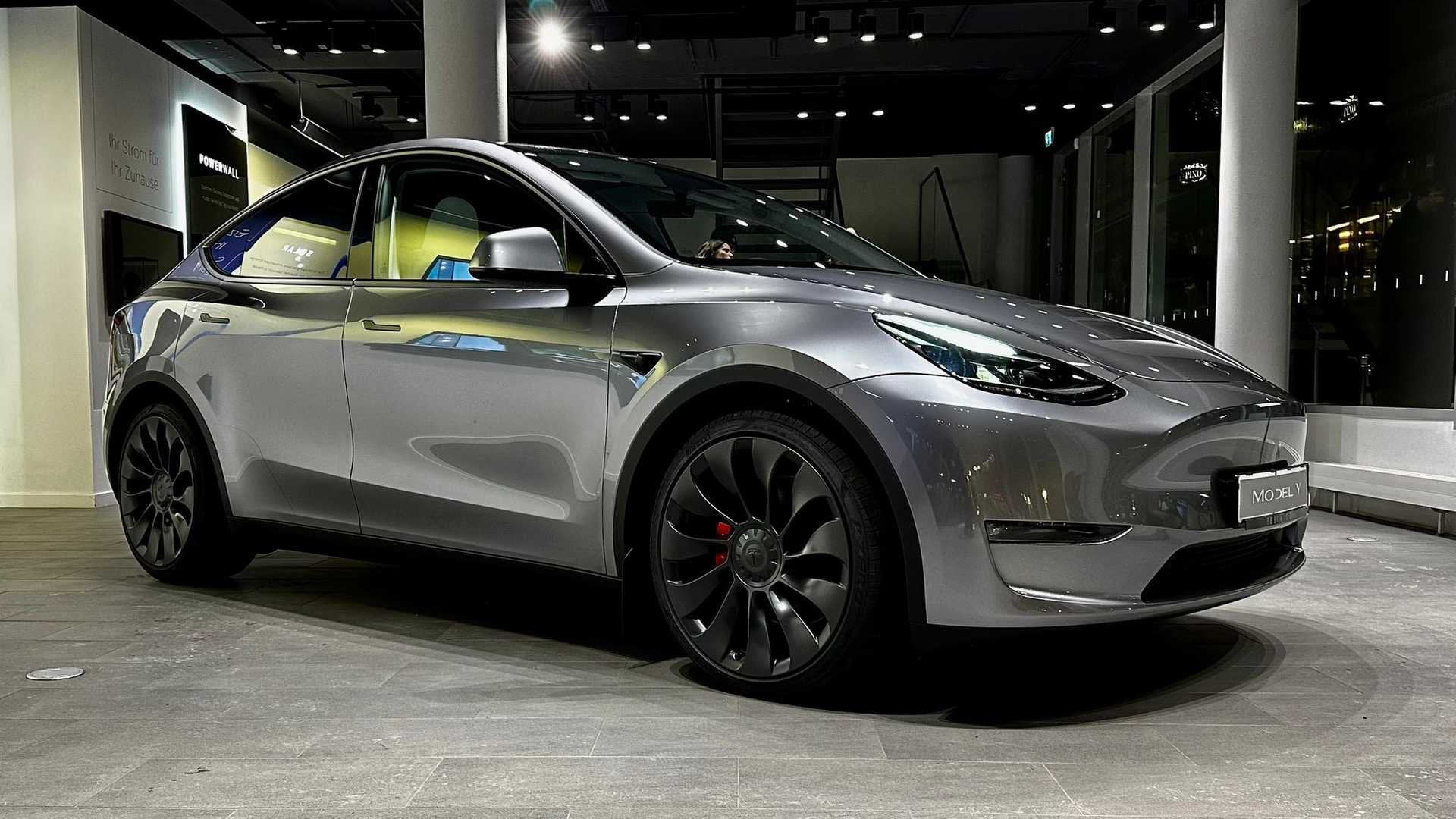
Tesla Model Y
Tesla’s Model Y stands out as one of the most capable electric vehicles when it comes to handling freezing climates, thanks to a combination of advanced engineering, cutting-edge technology, and software intelligence.
At the heart of its cold-weather prowess is the vehicle’s sophisticated battery thermal management system, which actively maintains the battery pack within an ideal temperature range.
Unlike many EVs that rely on passive cooling or rudimentary heating systems, the Model Y utilizes a liquid thermal circuit that can both heat and cool the battery cells as necessary. This ensures that, even when ambient temperatures plunge far below freezing, the chemical reactions inside the lithium-ion cells proceed efficiently, maintaining higher capacity and power output.
By minimizing the sluggishness that cold weather typically induces in batteries, the Model Y reduces the otherwise drastic range reductions that drivers might experience in such conditions.
Complementing this thermal management is Tesla’s innovative use of heat pump technology for cabin heating, a significant factor in winter range preservation. Traditional resistive heaters, common in older EV models, convert electrical energy directly into heat but do so inefficiently, rapidly draining the battery.
Tesla’s heat pump, however, works more like an air conditioner in reverse, extracting ambient heat from the outside air—even cold air—and concentrating it to warm the interior cabin.
This method requires far less energy, which means the battery isn’t burdened with excessive heating demands, preserving valuable miles of driving range. The system also allows for rapid warming of the cabin, improving driver comfort while minimizing energy waste.
Another aspect of the Model Y’s winter performance lies in Tesla’s extensive use of software to optimize energy use. The car’s onboard computer can precondition the battery and cabin while the vehicle is still plugged into a charger, using grid power rather than battery energy to reach optimal temperatures.
This proactive warming reduces the initial energy surge that would otherwise occur when starting a cold battery and immediately heating the cabin. The vehicle also intelligently manages power distribution during driving to balance propulsion, heating, and battery conditioning, maximizing overall efficiency.
Finally, Tesla’s commitment to continual improvement via over-the-air software updates allows the Model Y to adapt and improve over time, even after purchase.
Tesla collects data from thousands of vehicles operating in cold climates worldwide, refining algorithms to enhance thermal management, battery charging curves, and heating efficiency.
This dynamic approach keeps the Model Y competitive in cold weather, often outperforming newer EVs that lack such constant optimization. Together, these elements make the Model Y one of the most reliable and efficient EVs for drivers braving freezing temperatures.
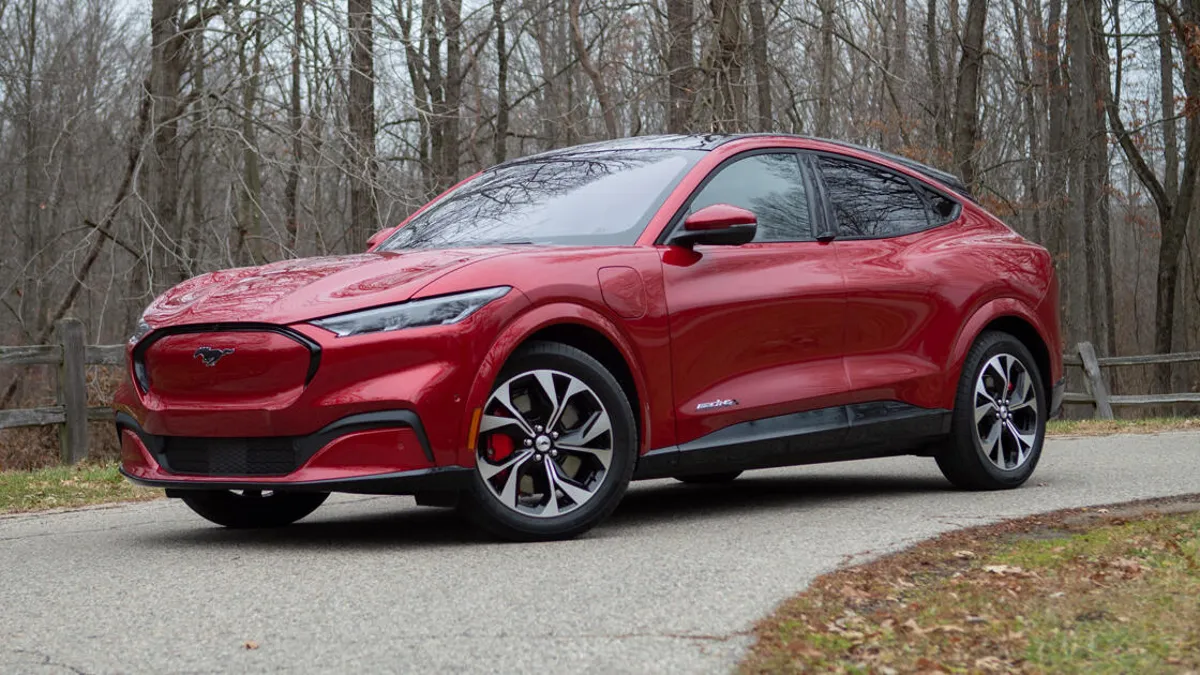
Ford Mustang Mach-E
The Ford Mustang Mach-E represents a major leap forward for Ford in the EV market, combining style, technology, and, notably, thoughtful engineering for cold-weather resilience.
One of its standout features in freezing climates is the integration of an advanced heat pump heating system, which significantly enhances energy efficiency compared to traditional resistive heating.
The heat pump functions by harvesting thermal energy from the outside air, even when it is cold and transferring that heat into the cabin. This approach drastically reduces the electricity required to warm the vehicle, conserving battery power and extending driving range in winter conditions where heating demands can otherwise decimate EV range.
Beyond heating, the Mach-E’s battery thermal management system plays a crucial role in maintaining optimal battery performance during cold spells. It employs liquid cooling and heating loops that work dynamically to keep the battery cells within a safe and efficient temperature window.
When temperatures dip, the system activates heating elements and circulates warm coolant to raise the battery’s temperature quickly.
This prevents the electrochemical processes inside the battery from slowing down, which is essential for maintaining both driving range and charging speed. Notably, the Mach-E’s thermal system also safeguards battery longevity, as extreme cold can cause physical stresses and degradation if left unmanaged.
Ford’s inclusion of a preconditioning feature is particularly helpful in cold climates. Using the vehicle’s app or infotainment system, drivers can remotely warm both the battery and cabin while the car is still plugged in, drawing power from the electrical grid rather than the battery itself.
This ensures the vehicle is ready to perform at peak efficiency from the first mile, eliminating the “cold start” penalty that many EVs experience in freezing weather. The Mach-E’s software also optimizes energy allocation, striking a balance between propulsion and climate control, which is vital for preserving range during extended winter drives.
Finally, the Mustang Mach-E benefits from Ford’s investment in charging infrastructure and support services, including access to growing public and fast-charging networks. This ecosystem makes it easier for drivers in colder regions to recharge efficiently, even in adverse weather.
Combined with the Mach-E’s solid range figures and comfortable, insulated interior, it becomes clear why this EV is a strong contender for those facing harsh winters. The combination of advanced heating technology, battery management, and practical user-focused features ensures the Mach-E remains both reliable and enjoyable in freezing climates.
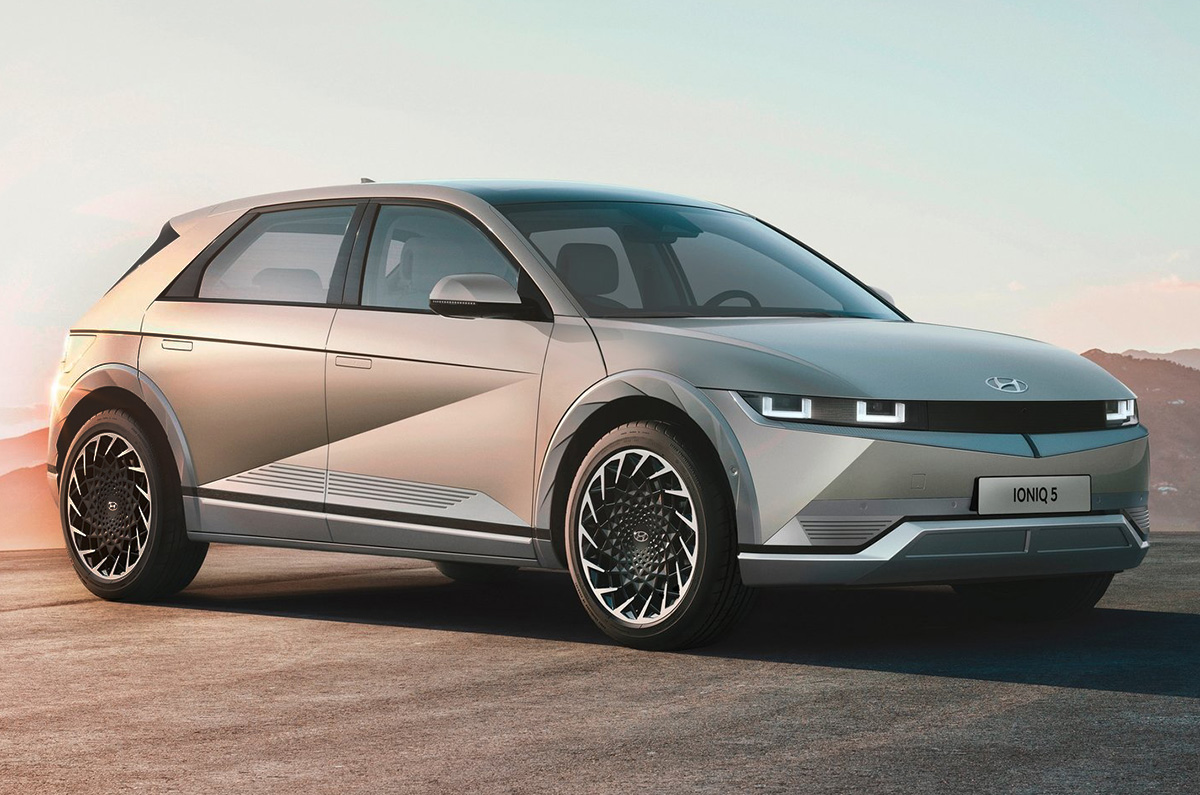
Hyundai Ioniq 5
Hyundai’s Ioniq 5 has made waves in the electric vehicle landscape for its futuristic design, rapid charging, and, importantly, its ability to maintain performance in cold weather. Central to the Ioniq 5’s cold-weather success is its innovative heat pump system, which dramatically increases heating efficiency compared to conventional electric heaters.
This heat pump doesn’t simply blow warm air into the cabin; it actively captures thermal energy from the environment even when outside temperatures are well below freezing and amplifies it for interior use. By significantly reducing the electrical energy required for heating, the Ioniq 5 minimizes the typical winter range reductions that plague less efficient EVs, making it a standout in the field.
The battery pack itself is engineered with a state-of-the-art liquid thermal management system that not only cools the battery during heavy use but also warms it during cold conditions.
This active temperature control keeps the lithium-ion cells within an optimal temperature range, preventing the chemical reactions inside from slowing down due to cold, which can reduce available power and extend charging times.
The battery’s ability to stay warm while driving or charging is key to maintaining consistent performance and avoiding frustrating delays caused by battery freeze protection protocols.
One user-friendly aspect of the Ioniq 5 is its remote preconditioning feature. Through Hyundai’s smartphone app, owners can start heating their vehicle’s cabin and battery while it’s still plugged in, using external power to bring the car to ideal operating temperatures before departure.
This means the car consumes less battery energy on the road, extending the practical driving range during winter months. The integration of these thermal management and preconditioning technologies shows Hyundai’s commitment to creating a comfortable and reliable winter driving experience.
Furthermore, the Ioniq 5’s fast charging technology retains its effectiveness even in cold weather, thanks to its careful battery thermal control.
While many EVs experience a drop in charging speeds as the battery cools, the Ioniq 5’s system warms the battery proactively, enabling quicker charge acceptance in sub-zero conditions. Combined with its sleek aerodynamic design and lightweight construction, the Ioniq 5 maximizes energy efficiency, making it one of the most winter-ready EVs available today.
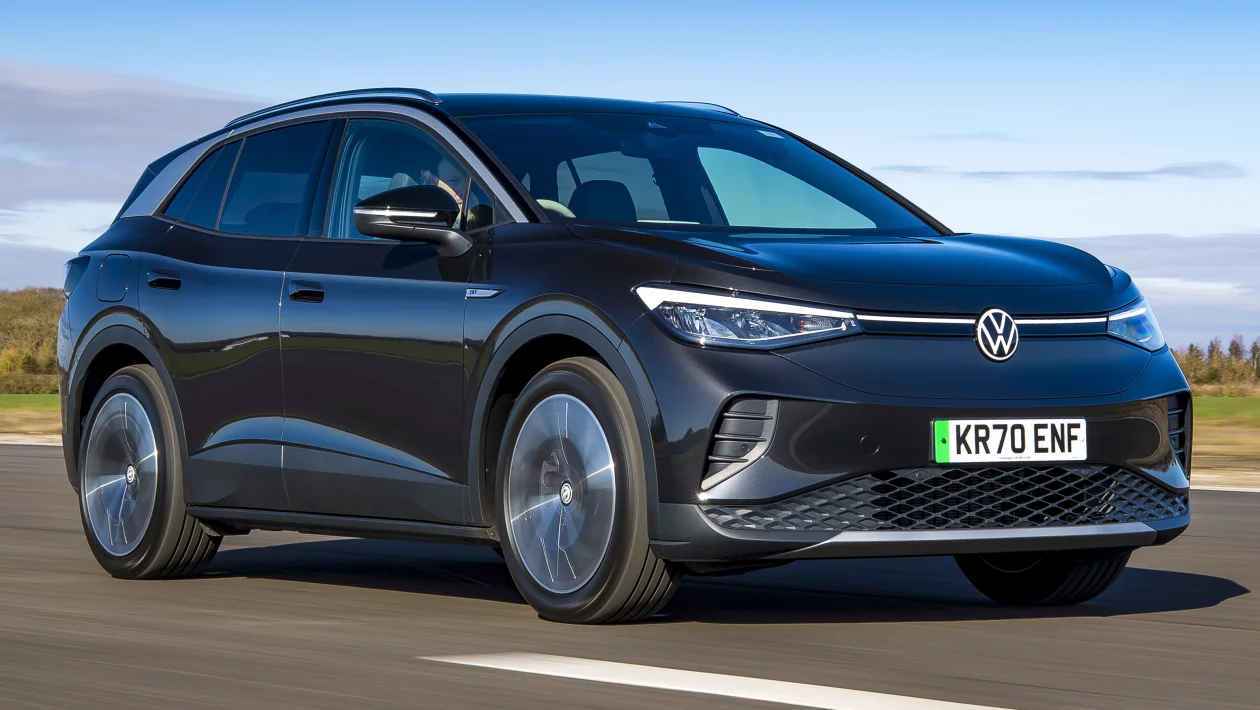
Volkswagen ID.4
Volkswagen’s ID.4 has gained significant popularity as an affordable, practical electric SUV, and it proves to be a competent performer in freezing climates thanks to a combination of reliable systems and thoughtful design.
The ID.4 is equipped with an efficient heat pump heating system, a crucial feature that greatly reduces battery drain compared to older resistive heating methods.
By extracting heat from the outside air and recycling it inside the cabin, the heat pump conserves precious energy, allowing drivers to maintain better range during cold weather.
The ID.4 also incorporates a liquid thermal management system within its battery pack. This system circulates coolant around the battery cells to both cool and warm them as necessary.
When temperatures fall, the coolant is heated and circulated to bring the battery pack up to its optimal operating temperature, preventing the slowdowns in battery chemistry that typically reduce range and charging speed.
This proactive management helps maintain consistent battery health and performance, which is particularly important for owners living in colder climates with frequent sub-zero days.
Volkswagen has made user convenience a priority by including preconditioning functionality accessible via the vehicle’s mobile app. This allows drivers to warm the cabin and battery while the car remains plugged in, reducing cold start penalties.
This feature is especially valuable in freezing conditions, where driving range can otherwise be compromised by the energy demands of heating from a cold start. The ID.4’s software optimizes power consumption for propulsion and heating, finding a balance that extends range while maintaining comfort.
Lastly, the ID.4’s aerodynamic styling and moderate weight also contribute to its cold-weather range retention. While it may not have the longest range on the market, the vehicle’s design and technology choices allow it to remain a reliable daily driver during winter months.
For many buyers, the ID.4 strikes a good balance between affordability, performance, and winter usability, making it a strong contender for those in cold climates seeking a versatile and practical electric SUV.
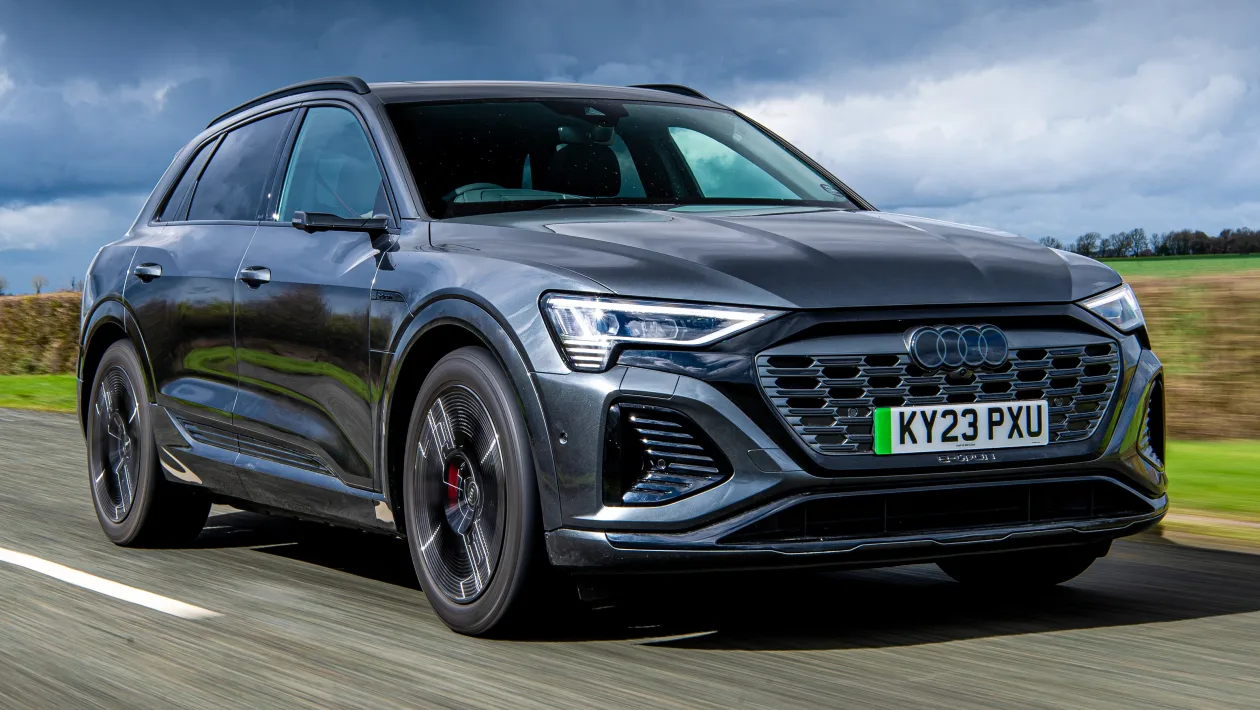
Audi e-tron
The Audi e-tron exemplifies how luxury and technology can combine to deliver an electric vehicle that not only offers comfort and performance but also excels in cold climates.
Audi has equipped the e-tron with one of the most advanced thermal management systems in the EV market, incorporating a highly efficient heat pump combined with an active liquid cooling and heating system for the battery pack.
This comprehensive system quickly warms or cools the battery cells to keep them in their ideal temperature range, ensuring that the vehicle maintains peak performance regardless of outside weather conditions.
What sets the e-tron apart in freezing temperatures is its seamless integration of thermal management with a premium climate control system. The heat pump provides energy-efficient cabin heating that significantly reduces battery draw compared to resistive heaters, extending driving range during the coldest months.
Additionally, the vehicle employs intelligent zoning within the cabin’s HVAC system, allowing it to prioritize heating in occupied areas while minimizing energy use. High-quality insulation and double-glazed windows further help maintain warmth inside the vehicle without relying excessively on the battery.
Audi’s thermal management system also includes an innovative preconditioning feature that can be activated remotely, warming both the battery and the cabin while the car remains plugged into a charger. This feature not only enhances comfort but also ensures the battery is at optimal temperature for efficient energy use and fast charging.
The e-tron’s rapid charging capabilities remain effective even in cold weather thanks to this proactive thermal management, reducing downtime for drivers.
Coupled with its all-wheel-drive system and rugged construction, the Audi e-tron offers confident and reliable winter driving performance. The combination of advanced thermal management, luxurious cabin comfort, and robust engineering makes the e-tron one of the best choices for drivers who demand both warmth and range in freezing climates.
5 EVs That Lose Range in Cold Weather
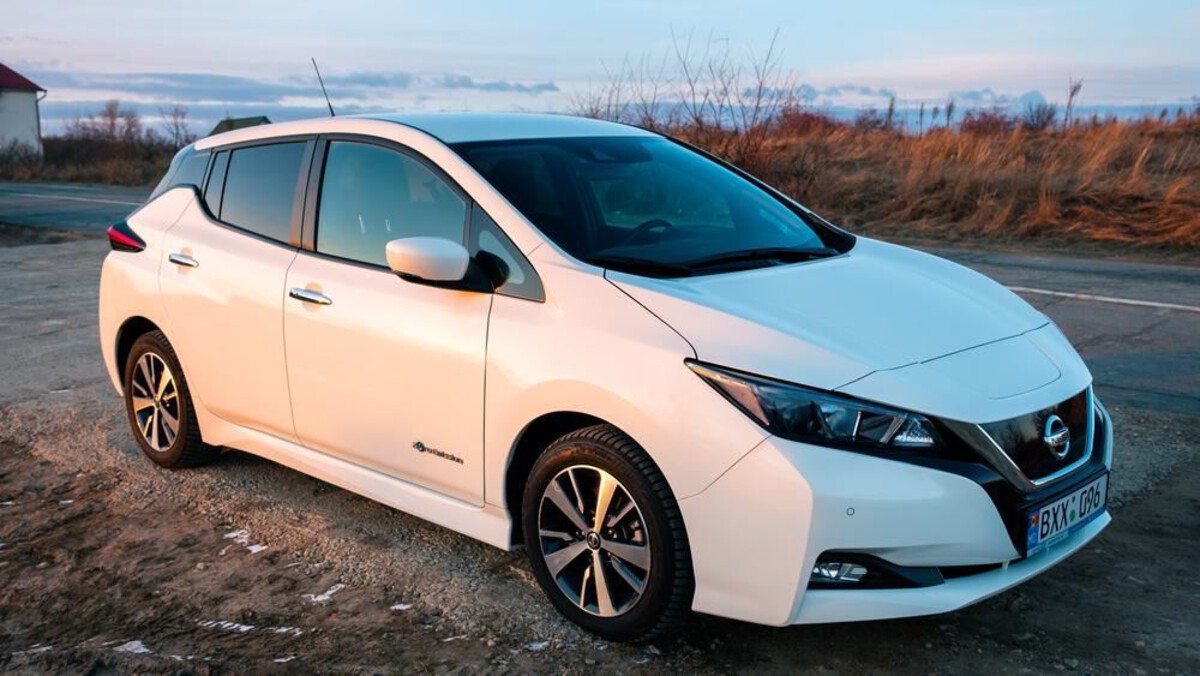
Nissan Leaf
The Nissan Leaf, one of the pioneering mass-market electric vehicles, has played a crucial role in introducing millions of drivers to electric mobility. However, when it comes to cold-weather performance, the Leaf’s aging technology and design reveal some notable vulnerabilities.
Its battery thermal management system is passive, meaning it lacks an active heating mechanism to keep the battery at an optimal temperature during freezing conditions.
Unlike many modern EVs that employ liquid-based thermal management systems to maintain battery warmth, the Leaf’s battery pack can quickly cool in cold weather, leading to a significant drop in available capacity.
This results in noticeable range degradation, sometimes upwards of 30% or more in harsh winters, which is especially problematic for drivers who depend on predictable range in icy climates.
Compounding the problem is the Leaf’s reliance on resistive cabin heaters rather than an energy-efficient heat pump. Resistive heaters generate warmth by converting electricity directly into heat, a method that draws heavily on battery power and further compounds the loss in driving range.
In frigid conditions, when interior heating demands soar, this system consumes a substantial portion of the already diminished battery capacity, exacerbating range anxiety for drivers.
The lack of a heat pump means the Leaf uses more energy to maintain a comfortable cabin temperature, making winter driving more expensive and less convenient. This limitation is particularly felt during stop-and-go city driving or short trips where the heater is used intensively but the battery hasn’t yet had a chance to warm up.
While Nissan has introduced gradual improvements in battery chemistry and pack design over successive Leaf generations, the core issue of passive thermal management remains largely unresolved in most models. As a result, the Leaf struggles to maintain charging speeds in freezing conditions because a cold battery must be charged more slowly to avoid damage.
This can lead to longer charging times at public stations during winter months, which reduces overall convenience and usability for owners. Many Leaf drivers in cold climates report frustration over the car’s reduced driving range and slower charging performance when temperatures dip, underscoring the impact of limited battery temperature control.
Despite these challenges, the Nissan Leaf remains popular for its affordability and reliability in moderate climates. However, for those living in consistently freezing conditions, the Leaf’s limited thermal management and less efficient heating systems make it less ideal compared to more modern EVs.
It serves as a reminder of how crucial thermal control technologies are in ensuring electric vehicles can function effectively year-round. For winter-focused buyers, the Leaf’s cold-weather performance limitations are a significant factor to weigh against its other advantages.
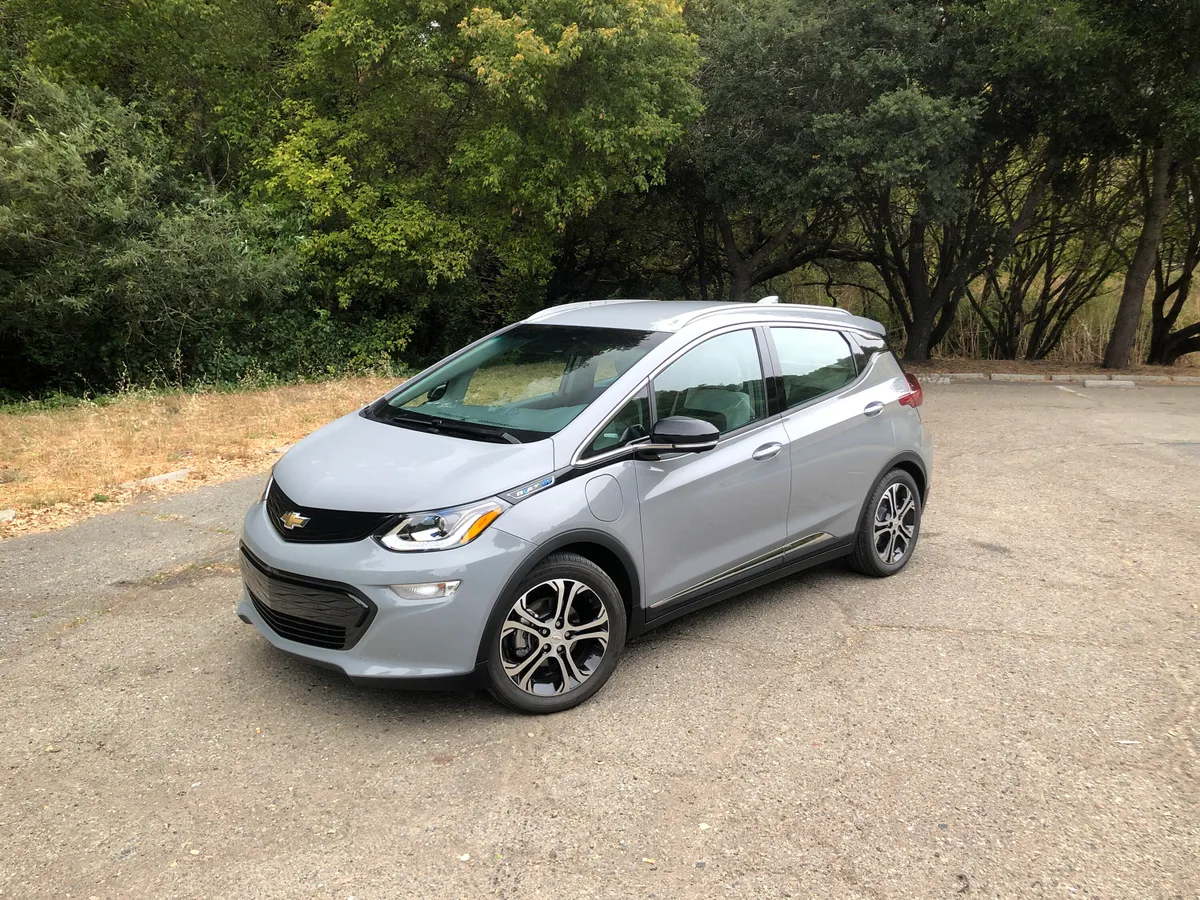
Chevrolet Bolt EV
The Chevrolet Bolt EV is celebrated for its impressive range and compact design, yet it faces notable struggles in cold climates due to its heating and battery management systems. One of the Bolt’s core issues in freezing weather is its reliance on resistive heating, similar to the Nissan Leaf, rather than an efficient heat pump.
Resistive heating consumes a large amount of electrical energy, leading to a sharp drop in available range when the heater is active. Drivers frequently report significant reductions in driving distance during winter months, with range losses sometimes exceeding 30%, making longer trips more challenging in cold regions.
In addition to heating challenges, the Bolt’s battery thermal management system focuses primarily on cooling rather than active heating. While effective at preventing overheating in warm climates, the lack of a dedicated heating element means the battery pack can become sluggish in cold weather.
The chemical reactions inside the lithium-ion cells slow dramatically at low temperatures, reducing power output and energy storage capacity.
This translates into diminished acceleration and reduced range during winter months. Furthermore, because the battery starts out cold, charging speeds slow significantly, extending the time required to recharge, an inconvenience compounded by fewer public fast chargers in some colder areas.
The Bolt’s software attempts to mitigate these issues by allowing for remote preconditioning of the cabin, but without an active battery heater, the battery itself remains vulnerable to cold temperatures until it has been driven enough to generate internal warmth.
This results in a cold start problem where early miles consume more energy and offer reduced performance. For drivers who take frequent short trips or live in very cold areas, this early inefficiency adds up to a frustrating winter experience.
The car’s limited thermal controls mean the Bolt cannot compete with newer models equipped with more sophisticated heat pumps and thermal management systems designed specifically for winter efficiency.
Despite its overall popularity and competitive pricing, the Chevrolet Bolt’s cold-weather performance limitations highlight the challenges faced by EVs without active battery heating and efficient cabin heating systems.
For buyers in freezing climates who prioritize consistent winter range and fast charging, the Bolt’s losses in cold weather may prove problematic. The vehicle’s winter performance underscores the importance of continued innovation in EV heating and battery temperature control technologies.

BMW i3
The BMW i3 is a pioneering electric vehicle known for its unique design and urban-friendly dimensions, but its cold-weather performance leaves much to be desired. One of the primary reasons the i3 struggles in freezing conditions is its use of resistive cabin heating, which, while simple, is extremely energy-intensive.
This heating method draws a significant amount of battery power to warm the cabin, rapidly depleting the available driving range in cold weather. For drivers accustomed to the i3’s nimble performance in temperate climates, the winter months bring a frustrating experience of sharply reduced range, often limiting the car’s practicality for longer cold-weather journeys.
The i3’s battery thermal management system, though adequate for moderate temperatures, does not incorporate an active heating mechanism for the battery pack. The lithium-ion cells cool rapidly when temperatures fall, slowing internal chemical reactions and reducing both power output and available capacity.
This can lead to noticeable performance degradation and a steep decline in driving range, especially during the initial minutes of cold-weather driving before the battery warms up. Furthermore, the cold battery also causes slower charging speeds, extending downtime and reducing the convenience of public or home charging sessions in winter.
BMW’s attempts to mitigate these cold-weather issues include remote preconditioning, which allows owners to heat the cabin while the car is still plugged in, preserving battery range. However, this strategy has limitations since it does not pre-warm the battery itself, which remains vulnerable to cold temperatures until sufficient driving has taken place.
This means that while the interior may be comfortable, the vehicle still suffers from reduced power and range until the battery is warmed by use. This shortcoming becomes particularly noticeable during short trips or stop-and-go city driving typical of many i3 owners, where the cold start penalty repeatedly affects efficiency.
Despite its innovative design and enjoyable driving dynamics, the BMW i3’s outdated heating technology and passive battery thermal management limit its usability in freezing climates.
For drivers who experience harsh winters regularly, the i3’s cold-weather range loss can undermine the convenience and practicality of owning an electric vehicle. The i3 exemplifies how important efficient heating and battery thermal management are for ensuring EVs remain reliable year-round, especially in challenging environmental conditions.
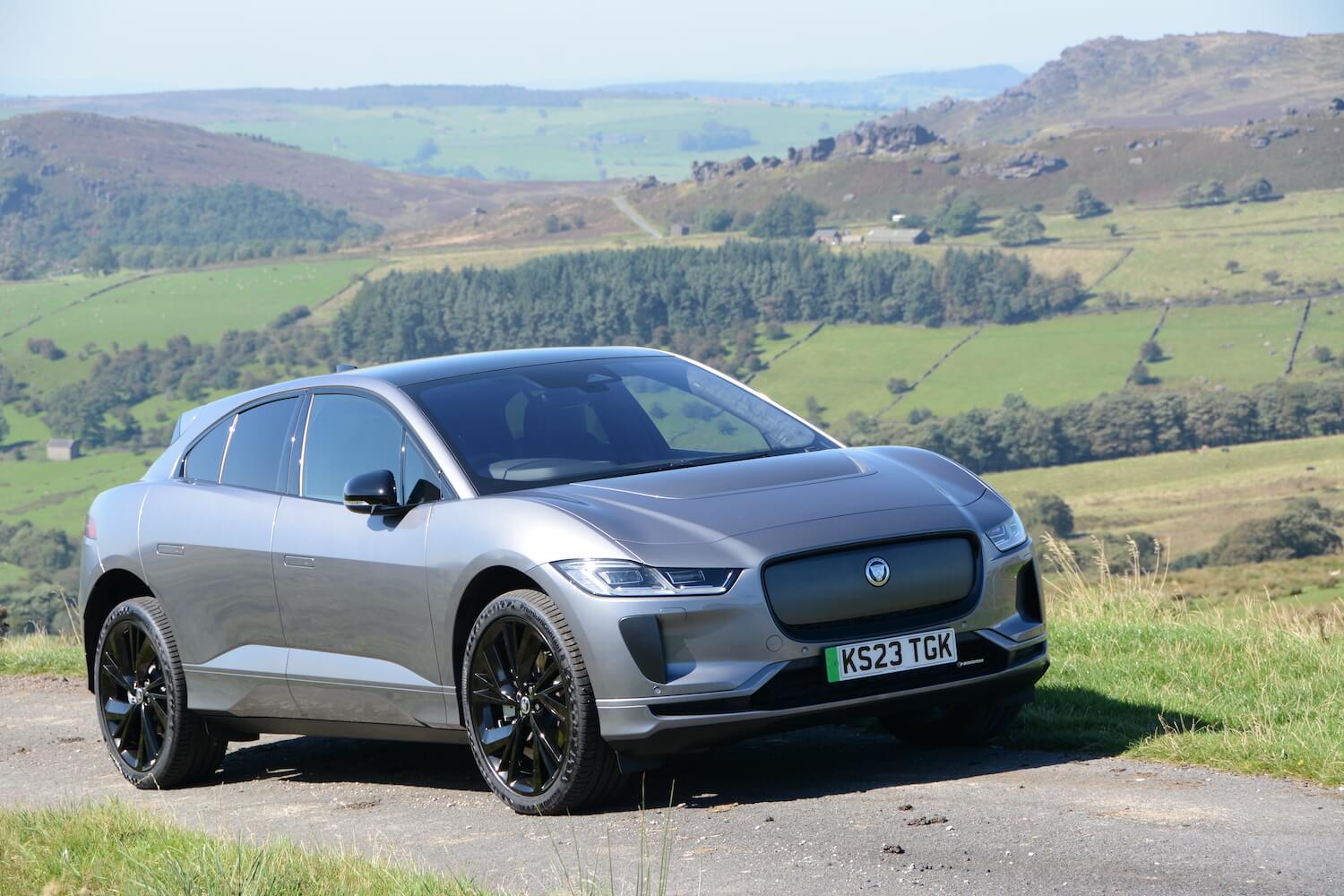
Jaguar I-PACE
The Jaguar I-PACE offers a compelling combination of luxury, performance, and cutting-edge electric drivetrain technology. However, despite its premium status and advanced features, the I-PACE is known to experience significant range reductions in freezing weather, primarily due to its heating and battery management approach.
The I-PACE relies on resistive heaters to warm the cabin, which consume a considerable amount of battery power during winter. This leads to a notable decrease in driving range when the heater is in use, which can be frustrating for owners expecting consistent performance year-round in a luxury vehicle.
While the I-PACE does feature a liquid-based thermal management system for the battery pack, it has been reported that the system’s battery warming capabilities are not as aggressive or effective as those found in some competitors. As a result, the battery pack cools down relatively quickly in cold weather, impairing both range and charging speed.
Drivers have observed range losses of 25% to 40% during winter months, depending on ambient temperatures and driving conditions, which can make planning longer trips challenging in colder climates. Slower charging rates in cold conditions further compound inconvenience, as the battery requires more time to warm before fast charging at high speeds becomes available.
Jaguar offers a remote preconditioning feature that warms the cabin while the vehicle is plugged in, helping conserve battery power for propulsion. However, similar to many EVs without dedicated battery heaters, the battery itself remains cold until driven sufficiently.
This cold start penalty results in reduced efficiency and range during the initial portion of each trip. For luxury car buyers who expect seamless, effortless driving experiences, these winter performance drawbacks can feel at odds with the I-PACE’s upscale image and pricing.
Despite these issues, the Jaguar I-PACE remains a highly regarded electric SUV with impressive driving dynamics and premium amenities. Its winter performance challenges highlight the ongoing need for manufacturers to prioritize efficient heating and battery thermal management to meet the demands of cold climate drivers.
Until such improvements are made, potential I-PACE buyers in colder regions must carefully consider the vehicle’s range loss and heating efficiency before committing to ownership.
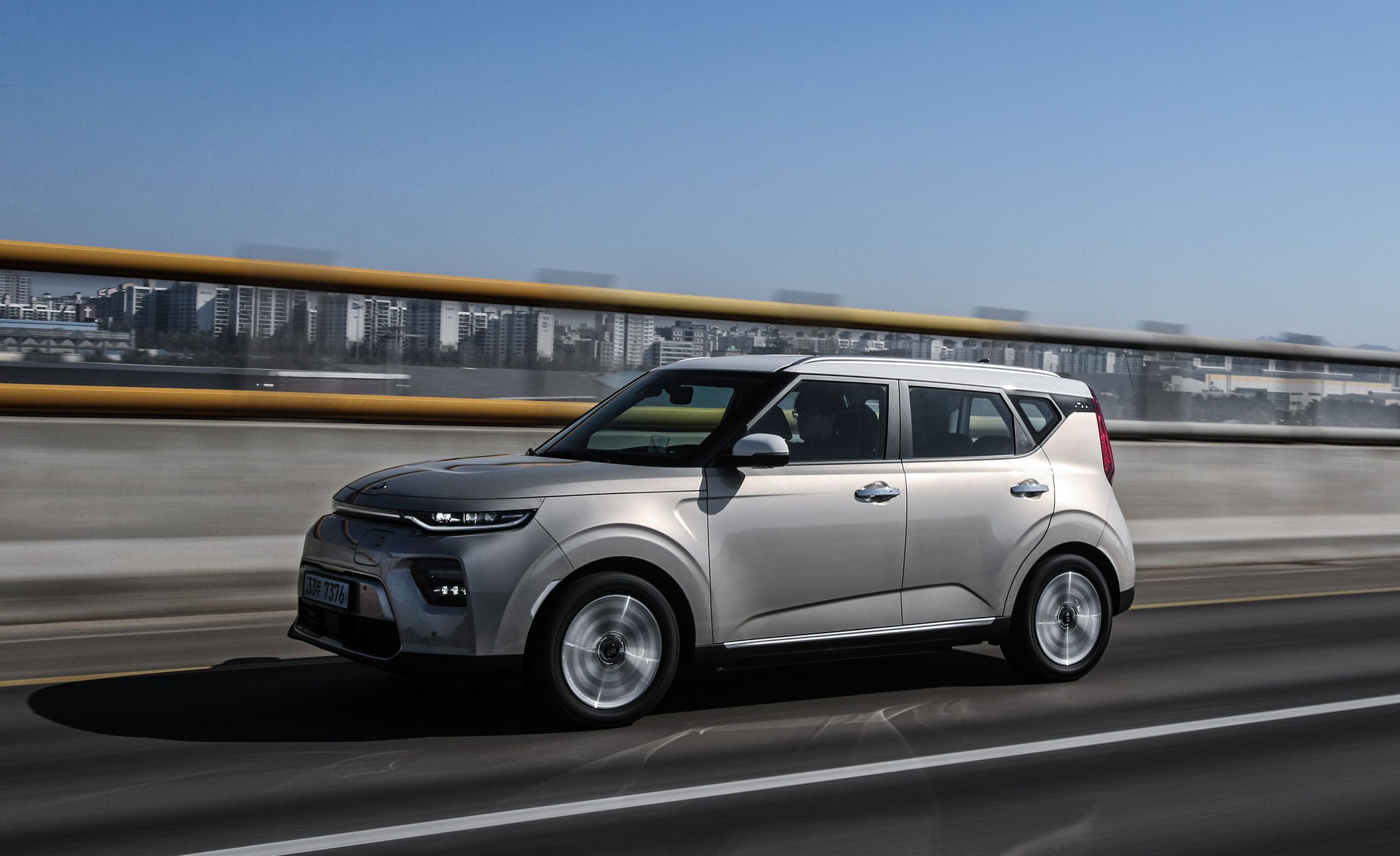
Kia Soul EV (First Generation)
The first-generation Kia Soul EV, while popular for its quirky styling and affordability, struggles significantly in cold climates due to its lack of advanced thermal management features. Early models of the Soul EV did not include an active battery heating system, relying on passive cooling and heating of the battery pack.
This omission leads to rapid battery cooling in freezing temperatures, severely reducing driving range and performance. Owners in cold regions frequently report range drops of 30% or more during winter, a stark contrast to the Soul EV’s nominal range ratings under ideal conditions.
The Soul EV’s heating system also utilizes resistive elements rather than a heat pump, further draining battery power during cold weather. Resistive heaters consume a disproportionate amount of energy to warm the cabin, magnifying range losses and making winter driving less practical.
Because the vehicle’s design and technology date back to the early stages of EV development, it lacks many of the energy-saving innovations found in newer models. This creates a compounded effect, where both battery efficiency and heating demands contribute heavily to cold-weather performance degradation.
Charging speed in cold weather is also impacted by the Soul EV’s passive thermal management system. Without an active battery heater, the battery remains cold longer, slowing charging rates and increasing the time needed to recharge. For drivers relying on public fast charging, this can be a major inconvenience, especially in winter when quick turnaround times are desirable.
While the Kia Soul EV was a breakthrough vehicle in its time and remains a budget-friendly EV option, its limited cold-weather capabilities underscore how critical modern thermal management systems have become for EV usability. For drivers in freezing climates, the first-generation Soul EV’s winter range loss and heating inefficiencies are important drawbacks that may outweigh its affordability.

